Stroom Invest interviews / artist Philipp Groubnov
Becoming an artist can be a slow and lonely road. For the Belarus born Philipp Groubnov this is an ever evolving process, which is now happening in The Hague. Starting from abstract paintings, Groubnov now combines his interests in biology, consciousness and (human) nature into poetic sculptural installations. His current works also have the ability to grow over time. Becoming an artwork can be a slow process as well.

Do you have any memories about when you considered something art?
I got interested in art by reading about it. Malevich and impressionists were my first interests. I started making abstract paintings and transformed my room into a studio. It was full of canvasses, and somehow my parents allowed it. I had a few attempts to study classical drawing in Belarus but this never really worked out for me. After high school, I started studying physics, but I was not interested in this academically, so I quitted in my second year. And that’s when I made the decision to go and study art. But art schools in Belarus didn’t appeal to me, so I was thinking: where can I go? I didn’t feel like I had any prospects in my home country. Living in Belarus didn’t give me any kind of motivation to do something.
But what direction to choose? There are many options.
Yeah. I didn’t really know. I didn’t know much about art, I only knew what I read in books. In the beginning, I was thinking of countries that have an art history, like Italy, France and also the Netherlands. Then there was a person who advised me to look into the Netherlands because it’s cheaper than England and there is an English based form of education. That’s how I found the Royal Academy of Arts in The Hague, founded in the 17th century. That sounded nice and fancy. And there was a preparatory year, so it was a good way to get to know about it. For my application, I selected my best drawings. But they asked for something different, like experiments or stuff??? I didn’t understand. Why do you want to see my unfinished bad work? In the first year, I had to adapt to what is considered art here. That was very hard. It was a completely different value system. And I was also introduced to different media like photography and everything else, but I knew that I wanted to do fine art, I had no doubt about that.
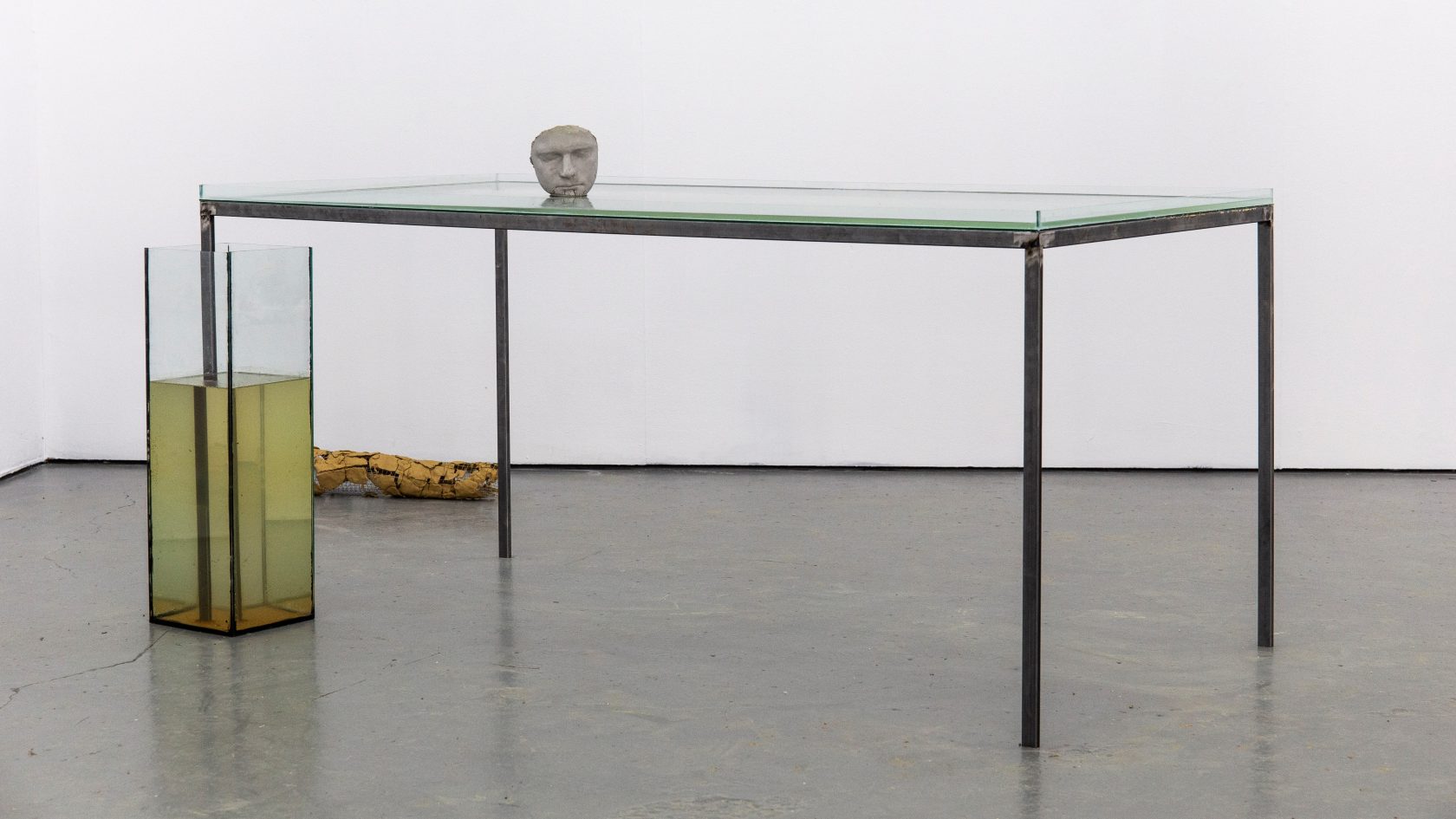
And while you were here, also the situation in your home country has changed a lot.
Yes, especially the last two years. It’s very complicated. It all feels like a strange dream. When the protests in Belarus came to an end, there was some kind of strange mood inside of me. I’m here and I am living a completely different life.
Did you have a sort of feeling that you should also have been there with it?
Yeah. In the beginning when the protests were starting to grow, many of my family members, were there on the streets. And of course, I also want to be there. But my parents kind of talked me out of it, and I understand why. But it was all happening on my birthday, 16th of August 2020.The biggest protest with over 200,000 or more people on the streets of Minsk, and I was watching it all in a live feed. I was so happy and it was such a crazy day. They were taking down the governmental flag and putting up a new one. But it turned out, no.
Did it influence your work or your practice?
Well, the protests happened during my graduation. It was more in the back of my head. It is maybe more present in my current work. I think it acquired a kind of social element that wasn’t there before. Also, I started thinking more about politics, but in a broader sense because I kind of grew up with this mentality. I don’t like political art. Art is something else for me. But a lot of what I think about now, politics are somehow there. Like how ideas are shaping what we do.
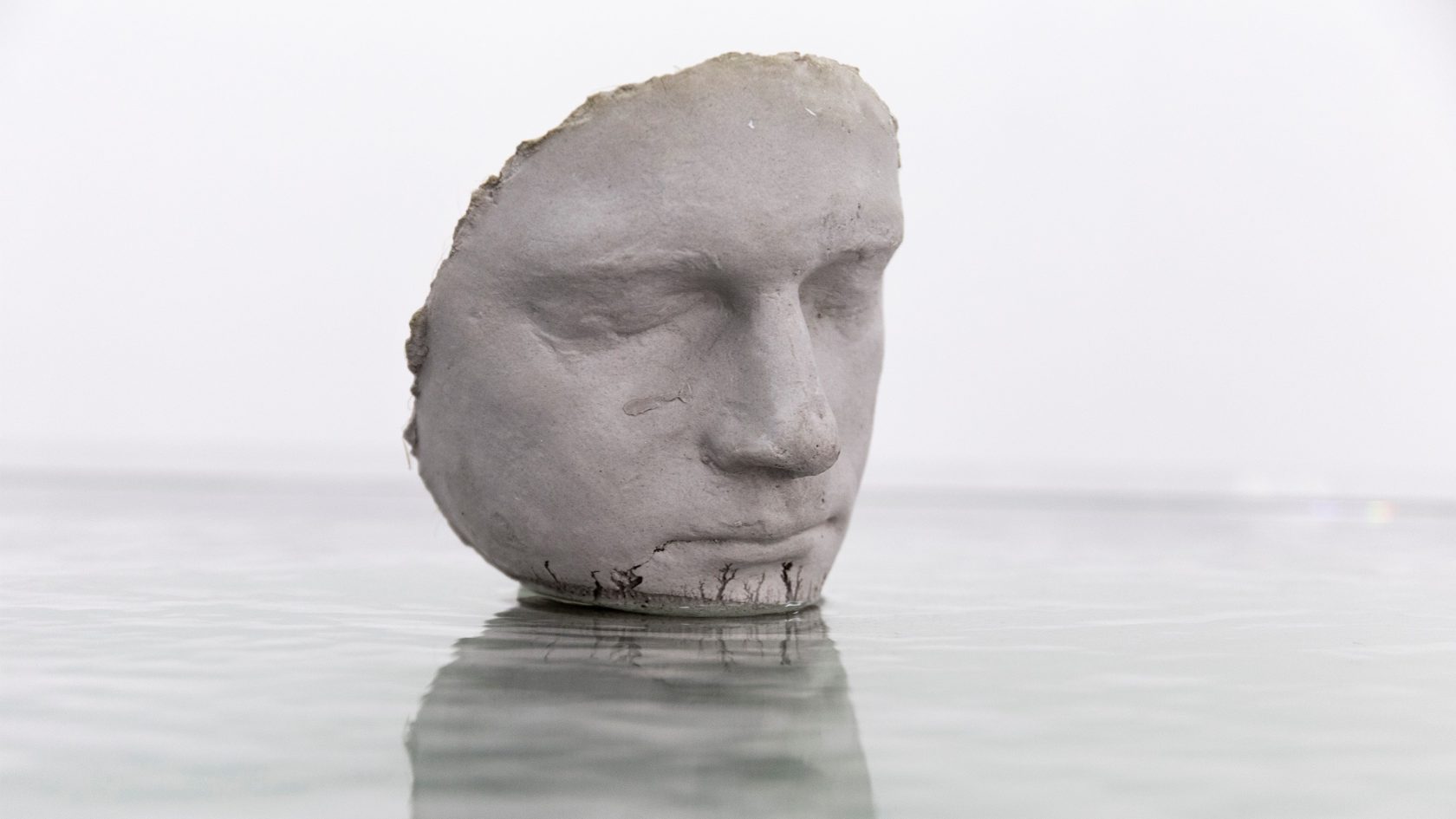
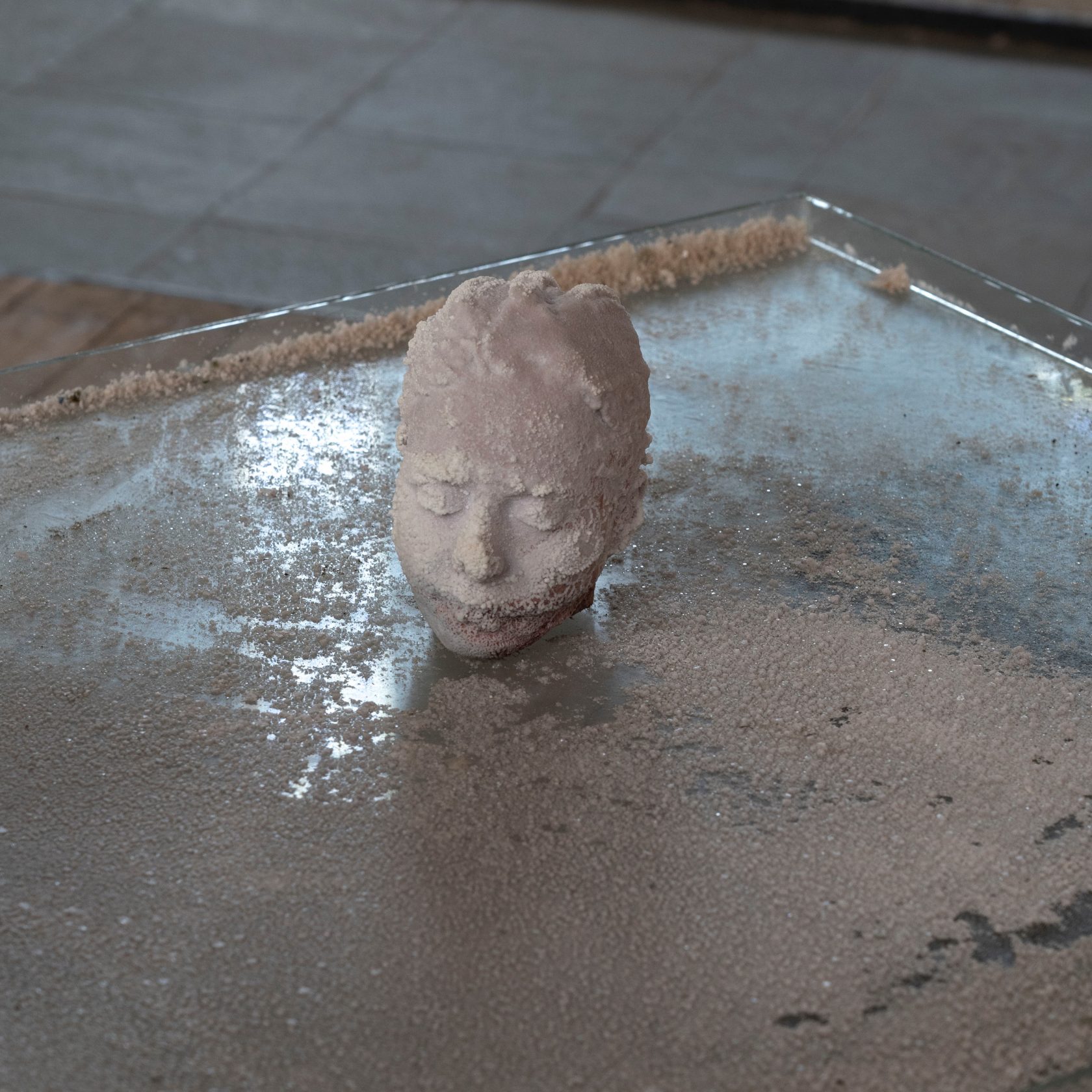
Do you read philosophy or poetry?
I used to really like Nietzsche and some other philosophers. In literature, I’m a really big fan of Dostoevsky. He still is probably one of my biggest inspirations. I also read sci-fi a lot. The last few years, I’ve been mostly reading about environmental topics, papers, reports. Timothy Morton, for example. So, people who are talking about the environment and the position of the human existence in philosophical terms, and at the same time in a practical sense.
Your themes are quit abstract, but your work is very figurative.
I think it’s an important question, actually. For me this is something I think about quite often. It all started with the notion of Malevich. For me, abstract art was really like the highest, you know, the peak of artistic expression. But that slowly changed during my years here. I think I’m still interested in abstract ideas, but I find space for these ideas within this figurative expression. I feel that this format is actually more fitting, because what I want to show is this kind of state in between things, which is confusing and often hard to talk about. I can use a human body shape, for example. But what I’m talking about is the kind of human ideas which are hard to put into a form.
They become symbols?
Yeah, it has to do with symbols. Or language.
And this is maybe also the reason why you choose to make installations over paintings?
Yes, the relationship between these elements are becoming more important. But also the materials in itself have qualities and functions within the installation, so there is always a kind of a tension between the idea of what it is and the reality of what is happening in the work. There is this connection between the mental world and the physical world, but this connection is very strange and hard to put into words.
There’s also some kind of sadness in your work.
I would say yes. Somehow, melancholy was there for a really long time. I think together with ideas of death, sleep and melancholy. This existentialism of Dostoevsky, it has always been there.
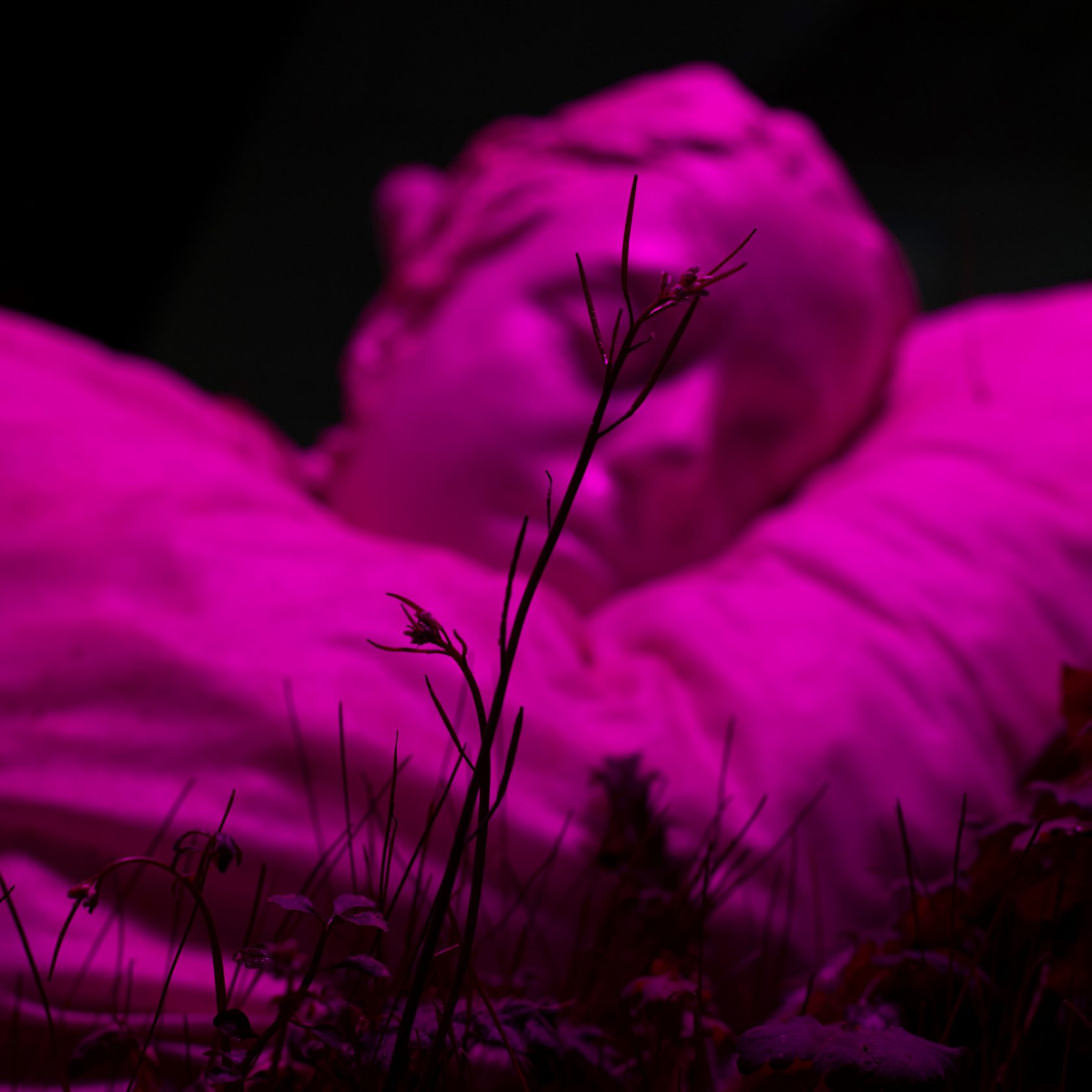
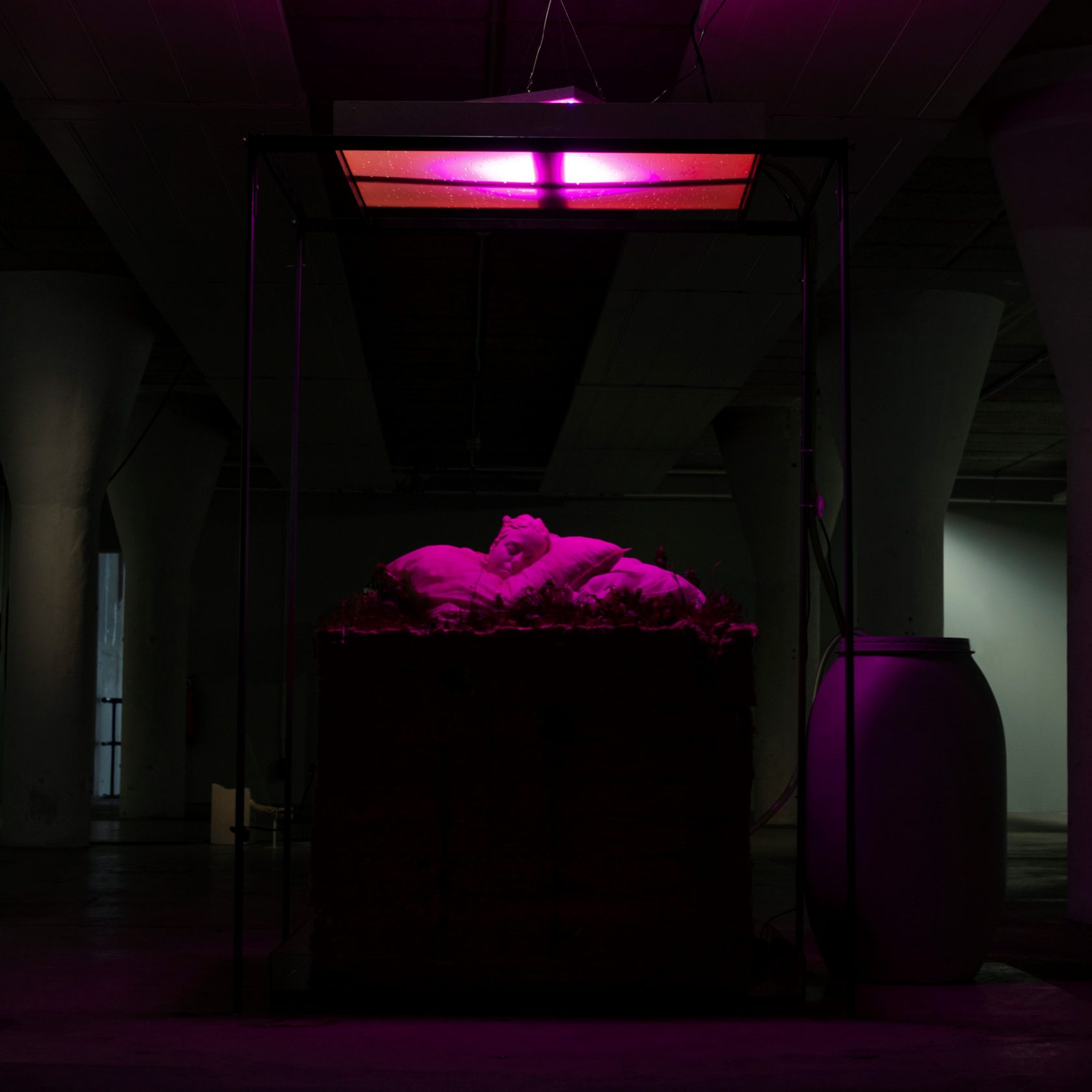
So can you tell me a little bit about how your work is coming together?
Well, my work is a collection of a lot of different things. It can start with specific ideas about sleeping. I’m very much interested in the subject of sleeping. I’m always thinking about works when I’m like in between sleep and awake states. I really can be sitting here in the studio and almost fall asleep and just imagine all these elements and their interactions. So that is also a source where ideas come. Also during the day, I sometimes take naps in between. Like I’m sitting at my computer, and I just zoom out and let my imagination go.
And at the other side, it could start with material experiments. Like, I just have a bucket of water and salt and I put some materials in there and I just see what happens. This just takes place in my studio. I use notebooks and I write down ideas so I have a collection of these things that are interesting for me, like salt crystals growing on wood or the reflection of something in the water. Random ideas. All the different processes take different amounts of time in different conditions. So gradually I see what could work in an exhibition and in the meantime, I’m also thinking on a conceptual level, like what this work could be about.
Your work shows as a still life, but you also like to add this layer of biology or living elements?
Yeah, it is sort of dead and alive. I think, it’s kind of a struggle. When you make work with biological elements, like living organisms, it becomes a form of generative art. I refer to my work as ‘a situation’. It is very tricky within the format of an exhibition, because you want your work to be there in a certain state, but you also want to let it grow and become something else. So I think it’s something that I’m still figuring out. The process of waiting is important for me, but what you can show is mostly sort of fixed.
So you have to make some sort of decision on how to show it?
Yes, it is a problem.
But maybe this is also an opportunity to experiment with?
Yeah definitely, it’s all part of the work in the end. But recently I had this kind of problem. I was invited to an exhibition and they said: we want to exhibit The Garden of Iarthly Delights. But it doesn’t really exist in this documented state anymore. I threw things out, because we couldn’t bring everything back from Milan. So the work doesn’t really exist. But what’s important for me, is the relationship between the elements, like a situation. So my work is not the material. I mean, it consists of material, but if someone asked me to present this work, it might take a different form. It is never perfect. It’s not like, this will be my masterpiece, now I can retire. It can always grow, I always think about continuing works. Months later I think, okay, but what is the next step?
Exhibiting works also helps you to develop them?
Yeah, for sure. I mean, I never have finished works in the studio. It’s always a collection of experiments and kind of moments. And they usually come together in the exhibition space.
So how do you find places to exhibit your work?
Well, I think that is actually something I am thinking a lot about this year. I don’t want to sit and wait for a gallery to call me. I just now had this opportunity to work in a temporary space. They were interested in actually showing the process of my work and giving me space for like, three months. So that was really nice because I could control the circumstances there. But now it turns out the space is only available for one month, so I have to change plans.
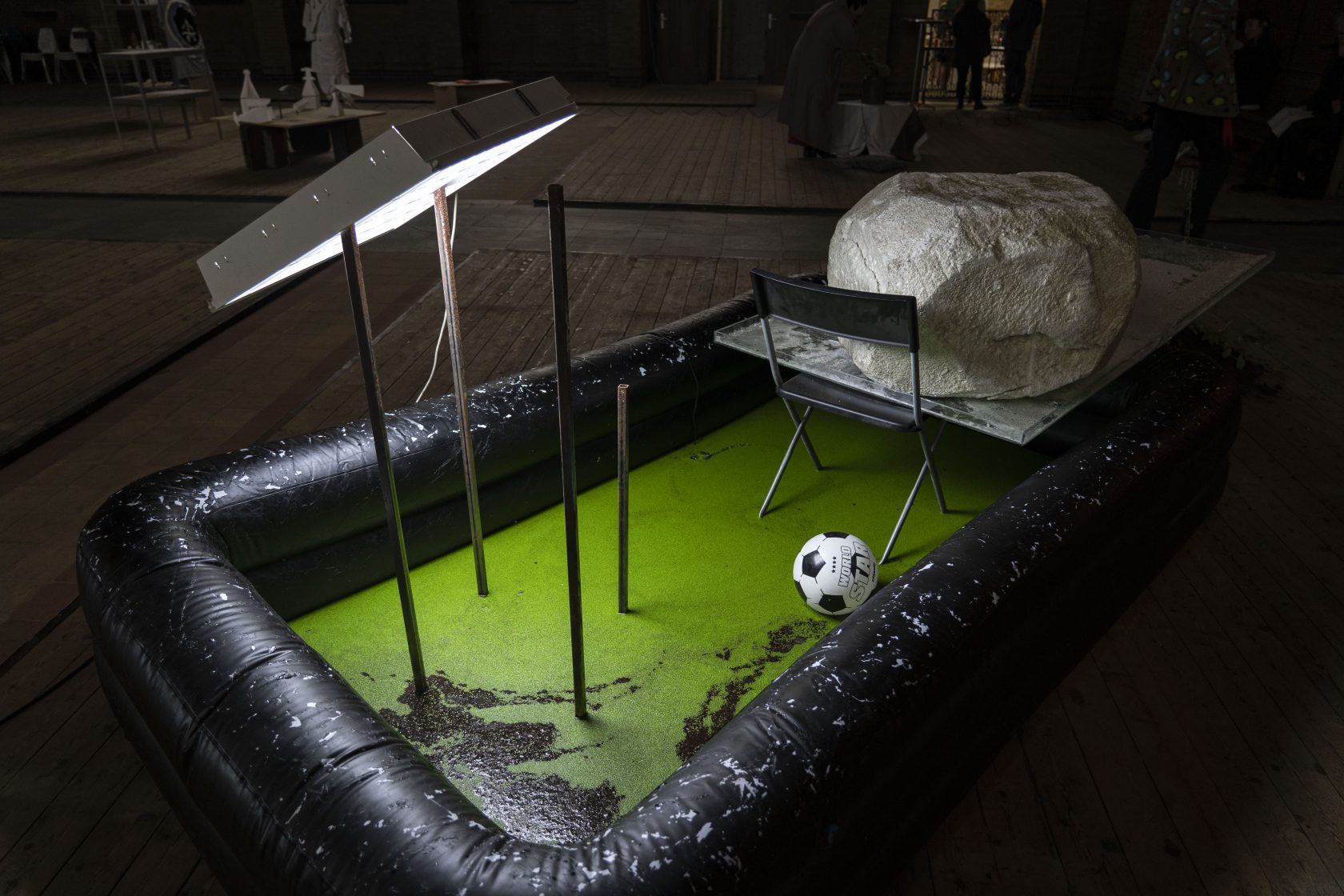
Do you also use other media? Do you take pictures or do you collect stuff?
No, I’m not, not that much of a collector.
So, you are an impressionist!
Yeah, I guess. Now that you mention it… It’s true (laughs).
Might film be a medium for you ? Maybe as an alternative or extension to exhibitions?
That is very interesting. I have made attempts in my life not so much to make a film, but to film something. I really like this idea of capturing moments. I also really like installations with video, but I am also need the physicality of them. I don’t think I would like to do a film that could only be shown on a screen or projection. I’m thinking about Introducing a microscope or cameras with a live feed into an installation. So that you get different perspectives of the same physical object. Because I mean, there is a lot of stuff happening inside it, which we don’t notice at first. I want to show that there are a lot of layers, like a lot of dimensional space.
What subjects do interest you now, at this moment in time?
Well, for quite some time I was researching on the Garden of Eden and gardening in general. It’s really a very interesting topic. I think it’s much broader than people think, because it’s like the history of how we deal with plants and other living beings. The Garden of Eden is also a holy place. Overall, I think the human environment is a topic that is very present in my work. So gardening in a way, is like a different entry point to this. It’s also about redefining nature.
And what do you expect from the Invest studio visits? Do you like talking about your work?
Well, I’m very curious. I mean, it’s been a while since I have talked to new people about my work. I mostly like to talk about my previous work, because I then have already thought about it for a long time. When I’m in the process of making, I usually don’t.
We talk a lot about the international crisis that is going on these days. Does this distract you from your work?
Yeah, certainly. I start every day reading the news. Seeing all these horrible things, is not a good start of the day. From my father’s side I have family in the Donbas and I visited Mariupol when I was about 10 years old. It is crazy to know that the city is just not there anymore. It’s horrific and confusing. And I live a normal life here in The Hague, while my home country is being used to facilitate this war.
Does it change the picture of your personal background?
It’s hard to say, I guess. I mean, definitely. This period of me maturing as a human. When I was 18, during the Crimea crisis, I didn’t really think much about Belarus. I wasn’t paying attention at all. I was locked in my own self. And now, this is a different period in my life, where I think a lot about. It’s been actually such a long time since I lived in Belarus. So I guess the current events are really reshaping my identity. Back then it was a relatively stable period and of course childhood memories are so different. But this feeling of propaganda was there already since early age, and also this authoritarian atmosphere. I felt it since I was a child, and I hated it. Now realizing that I’ve been here for seven years is actually quite long. And my plan is to apply for the Rijksakademie. There comes a point when you think I’m longer here, than I was there.
Stroom Invest Week is an annual 4-day program for artists who were granted the PRO Invest subsidy. This subsidy supports young artists based in The Hague to develop their artistic practice so that artists and graduates of the art academy can continue to live and work in The Hague. To give the artists extra incentive, Stroom organises this week consisting of studio visits, presentations and several informal meetings. The intent is to broaden the visibility of artists from The Hague through future exhibitions, presentations and exchange programs. Stroom Invest Week 2022 will take place from 7 to 10th of June.